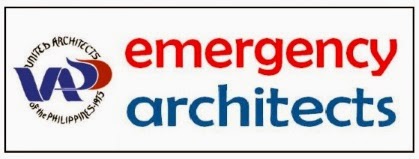The Philippines is one of the ten most afflicted countries in the world in terms of lives and property lost as a resutlt of damage due to natural calamities such as earthquakes and typhoons that visit the islands annually. The destruction caused by these natural phenomena in terms of loss of lives, structures and livelihood reinforces the suffering of the poor who are the most affected. In times of disaster, not only food supply is the main problem, the provision of temporary shelters is also of great concern before facing the heavier economic burden of rebuilding their homes and livelihood in the future.
While most post-disaster management strategies are concentrated on relief work, so much has to be undertaken with regards to the shelter component of disaster victims. The viscious cycle of disaster-destruction-reconstruction has to be considered towards a more wholistic disaster mitigation and management strategy which would involve building resilience in communities so they have the capacity to cope and recover if a disaster strikes.
In view of very recent devastating Typhoon Yolanda that hit the Philippines which affected large urban areas in the Visayas, the United Architects of the Philippines (UAP) has initiated the establishment of the UAP Emergency Architects Group that will respond to the challenge of assisting communities towards rebuilding in a sustainable manner following natural or man-made disasters. UAP believes that architects, in collaboration with other built environment professionals, can provide the necessary help to communities in mitigating against disaster through proper planning and design, and sensitively managing the process of rebuilding.
The Immediate Task:
Because of the current situation in the areas hardest hit by Typhoon Yolanda, the UAP Emergency Architects Group has identified initially the provision of temporary shelters for those whose homes were demolished by the wrath of the typhoon considered as the strongest typhoon in the world. The UAP-EA Group is doing preliminary assessments on possible locations in Tacloban City to house the temporary shelters. The provision of temporary emergency shelters in an identified area will also include mobile showers/laundry (Kapamilya Shower, a project of UAP in partnership with ABS-CBN), a mobile kitchen and a mobile clinic to respond to the needs of the population in the shelter camp.
At the start, temporary tent-like structures are to be provided to displaced families while the UAP-EA Group prepares more sustainable temporary structures that would provide better living conditions for beneficiaries. Studies are currently being undertaken towards more viable and secure temporary shelter provisions (like container vans and bus-homes) which can be easily delivered to disaster-stricken areas and for probable re-use.
This immediate task of the UAP-EA Group will cover only the first stage of a more comprehensive action to rebuilding. Consequently, the group shall follow the complete action agenda of the international emergency architects group that will include temporary shelter, long-term reconstruction and capacity building as well. Actions of the group will be anchored on the principle that rebuilding is to be done in a manner that is environmentally and socially sustainable.

 RSG
RSG












0 comments:
Post a Comment